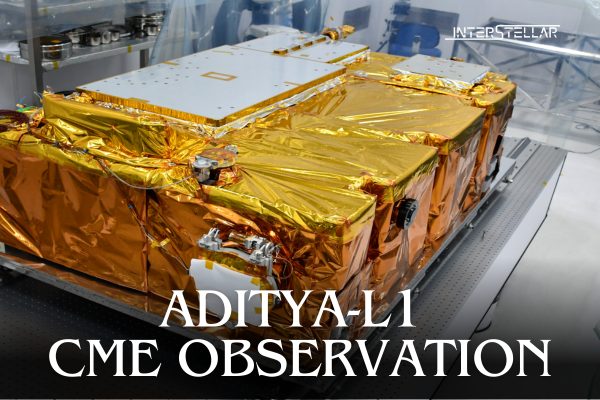Aditya-L1 Reveals Key Insights into Solar Activity with CME Observation
Indian researchers using the Visible Emission Line Coronagraph (VELC) onboard the Aditya-L1 mission have unveiled new insights into a Coronal Mass Ejection (CME), a solar event with significant implications for space weather. This breakthrough comes as part of India’s first space-based solar mission, marking a significant achievement in understanding the Sun’s behaviour and its impact on Earth.
Aditya-L1: India’s Pioneering Solar Mission
Aditya-L1, launched on September 2, 2023, reached its designated halo orbit around the Sun-Earth Lagrange Point L1 on January 6, 2024. Positioned 1.5 million kilometres from Earth, this vantage point allows continuous observation of the Sun without interference from eclipses or Earth’s atmosphere.
On July 16, 2024, Aditya-L1 observed a CME accompanied by a powerful solar flare. Using VELC, scientists studied the Sun’s corona in extraordinary detail. By analysing light emitted at a unique green wavelength of 5303 Å, caused by iron atoms at extreme temperatures, researchers tracked the movement of solar material during the event.
What is a CME and Why Does It Matter?
A Coronal Mass Ejection (CME) is a massive release of charged particles and magnetic fields from the Sun’s corona. These eruptions can eject plasma at speeds of millions of kilometres per hour. When a CME reaches Earth, it interacts with our magnetic field, potentially disrupting satellites, communication systems, and power grids.
Understanding CMEs is vital for predicting their effects and mitigating potential space weather hazards.
Key Observations from the July 2024 CME
Researchers from the Indian Institute of Astrophysics published their findings in The Astrophysical Journal Letters. Their study reported the following:
1. Coronal Dimming
The corona’s brightness decreased by 50% in the region where the CME occurred, indicating a significant ejection of solar material. This dimming lasted for six hours, highlighting the magnitude of the event.
2. Increased Temperature and Turbulence
The corona experienced a 30% rise in temperature and increased turbulence during the CME. Measurements showed a non-thermal velocity of 24.87 km/s, reflecting heightened magnetic activity in the eruption region.
3. Plasma Movement and Deflection
Doppler velocity measurements revealed that plasma was moving away at 10 km/s. This redshifted movement indicates deflection caused by the Sun’s dynamic magnetic field, shedding light on how CMEs evolve as they travel through the solar system.
Pioneering Solar Science and its Impact
Aditya-L1’s observations help unravel mysteries of the Sun’s corona and improve understanding of solar activity. The findings also underline the importance of predicting CME trajectories and their potential impacts on Earth’s technology and infrastructure.
This mission is not only a testament to India’s growing capabilities in space research but also a source of inspiration for future scientists and students, demonstrating the power of space exploration in addressing global scientific challenges.





